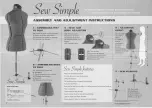
Welding procedure
MIG/MAG welding
099-00L104-EW501
17.01.2022
47
6.1.4 rootArc/rootArc puls
Short arc with perfect weld modelling capabilities for effortless gap bridging, especially for root welding
Figure 6-7
• Reduced spatter compared to standard short arc
• Good root formation and secure sidewall fusion
• Manual and automated applications
Unstable arc!
Welding current cables that are not fully unrolled can cause faults in the arc (flickering).
• Fully unroll welding current cables, torch hose packages and, if applicable, intermediate hose
packages. Avoid loops!
6.1.5 wiredArc
Welding process with active wire control for stable and uniform penetration characteristics and perfect arc
length stability, even in difficult applications and positional welding.
With a GMAW arc, the welding current (AMP) changes with the change of the stick-out. If, for instance,
the stick-out is extended, the welding current decreases at constant wire feed speed (DG). Thus, the heat
input into the workpiece (molten metal) decreases and the penetration reduces.
Figure 6-8
With the EWM wiredArc arc with wire control, the welding current (AMP) changes with the change of the
stick-out only slightly. The compensation of the welding current takes place with an active control of wire
feed speed (DG). If, for instance, the stick-out is extended, the wire feed speed will be increased. Due to
this, the welding current remains almost constant and thus the heat input into the workpiece remains al-
most constant. As a result, the penetration changes with the change of the stick-out only slightly.
Figure 6-9
















































